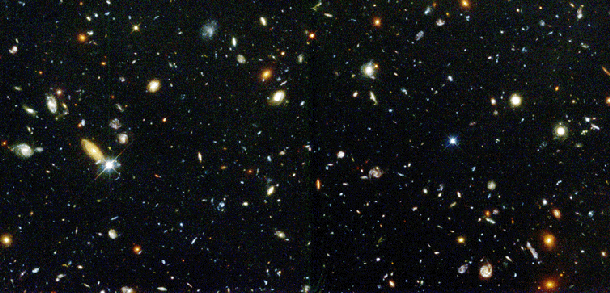Like grains of sand on a cosmic beach, individual stars of large spiral galaxy NGC 300 are resolved in this sharp image from the Hubble Space Telescope's Advanced Camera for Surveys (ACS). The inner region of the galaxy is pictured, spanning about 7,500 light-years. At its center is the bright, densely packed galactic core surrounded by a loose array of dark dust lanes mixed with the stars in the galactic plane. NGC 300 lies 6.5 million light-years away and is part of a group of galaxies named for the southern constellation Sculptor. Hubble's unique ability to distinguish so many stars in NGC 300 can be used to hone techniques for making distance measurements on extragalactic scales.

What happens when galaxies collide? One of the best studied examples of the jumble of star clusters, gas, and dust clouds produced by such a cosmic train wreck is the interacting galaxy pair NGC 4038 / NGC 4039, the Antennae Galaxies, only sixty million light-years away. In visible light images, long, luminous tendrils of material seem to reach out from the galactic wreckage, lending the entwined pair an insect-like appearance. But this penetrating view from the new Wide-field InfraRed Camera (WIRC) attached to the Palomar Observatory's 200 inch Hale telescope shows, in false-color, details of some otherwise hidden features. The large central nuclei of the two original galaxies dominate the near-infrared scene speckled with other bright sources which are themselves giant, newly formed star clusters. Remarkably the northern (topmost) nucleus, obscured in optical images, is also revealed here to have a barred, mini-spiral structure reminiscent of many "single" spiral galaxies.
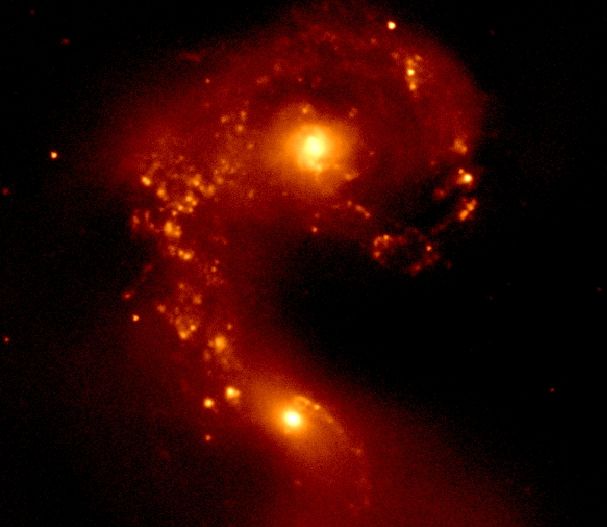
Swooping below Saturn, the Cassini spacecraft spied several strange wonders. Visible in the distance are some of the many complex rings that orbit the Solar System's second largest planet. In the foreground looms the gigantic world itself, covered with white dots that are clouds high in Saturn's thick atmosphere. Saturn's atmosphere is so thick that only clouds are visible. At the very South Pole of Saturn lies a huge vortex that is a hurricane-like storm showing no sign of dissipating. The robotic Cassini spacecraft took the above image in January from about one million kilometers out, resolving details about 50 kilometers across.
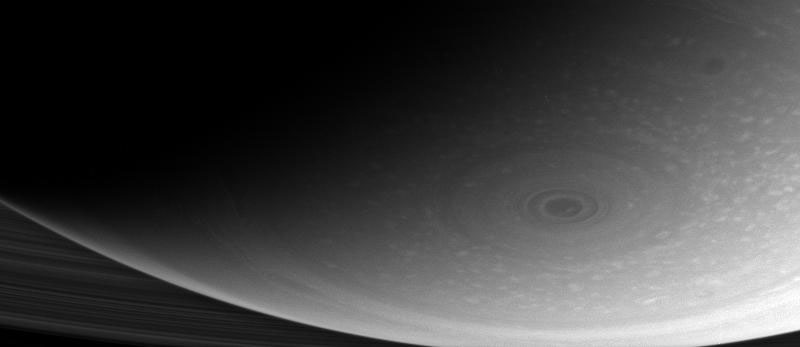
Last week, a car orbited the Earth. The car, created by humans and robots on the Earth, was launched by the SpaceX Company to demonstrate the ability of its Falcon Heavy Rocket to place spacecraft out in the Solar System. Purposely fashioned to be whimsical, the iconic car was thought a better demonstration object than concrete blocks. A mannequin clad in a spacesuit -- dubbed the Starman -- sits in the driver's seat. The featured image is a frame from a video taken by one of three cameras mounted on the car. These cameras, connected to the car's battery, are now out of power. The car, attached to a second stage booster, soon left Earth orbit and will orbit the Sun between Earth and the asteroid belt indefinitely -- perhaps until billions of years from now when our Sun expands into a Red Giant. If ever recovered, what's left of the car may become a unique window into technologies developed on Earth in the 20th and early 21st centuries.
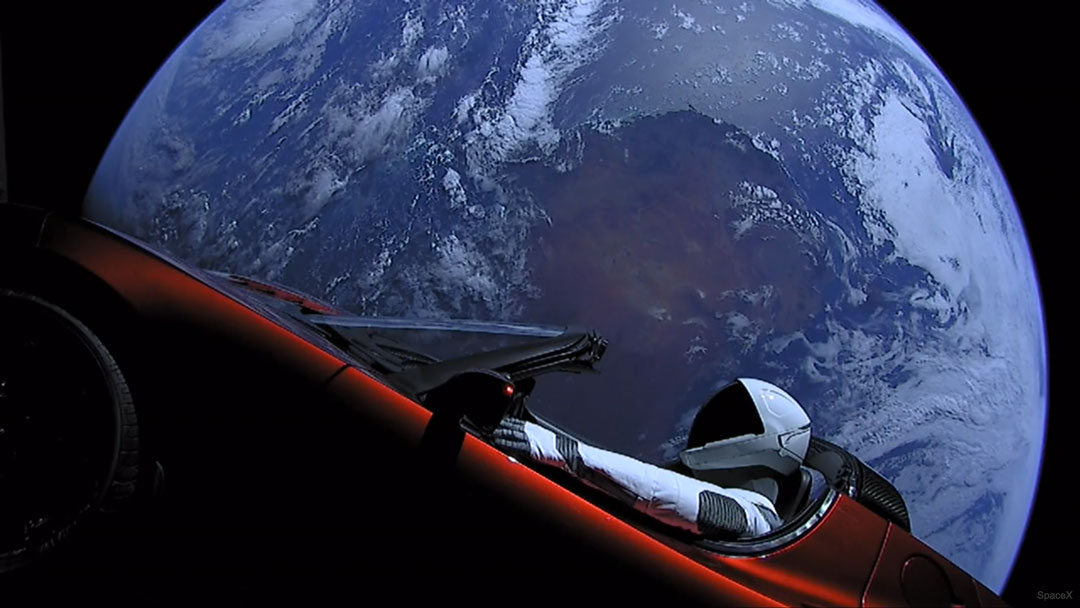
The above sky map tells us the universe is 13.7 billion years old -- but how? At first look, one only sees the microwave glow of gas from our Milky Way Galaxy, coded red, and a spotty pattern of microwaves emitted from the early universe, coded in gray. The gray cosmic microwave background is light that used to bounce around randomly but came directly to us when the expanding universe became cool enough for nearly transparent atoms to form. A close inspection of the spots reveals a slightly preferred angular distance between them. One expects such a pattern to be generated by sound emanating from slightly over-dense regions of the early universe. Sound waves will take time to generate such a pattern, and the present age of the universe can then be directly extrapolated. The above universe age is estimated to be accurate to better than 0.2 billion years. The above map was taken by the WMAP satellite orbiting the Sun at the L2 point, just outside the orbit of the Earth.

If not perfect, then this spiral galaxy is at least one of the most photogenic. An island universe containing billions of stars and situated about 40 million light-years away toward the constellation of the Dolphinfish (Dorado), NGC 1566 presents a gorgeous face-on view. Classified as a grand design spiral, NGC 1566 shows two prominent and graceful spiral arms that are traced by bright blue star clusters and dark cosmic dust lanes. Numerous Hubble Space Telescope images of NGC 1566 have been taken to study star formation, supernovas, and the spiral's unusually active center. Some of these images, stored online in the Hubble Legacy Archive, were freely downloaded, combined, and digitally processed by an industrious amateur to create the featured image. NGC 1566's flaring center makes the spiral one of the closest and brightest Seyfert galaxies, likely housing a central supermassive black hole wreaking havoc on surrounding stars and gas. Almost Hyperspace: Random APOD Generator
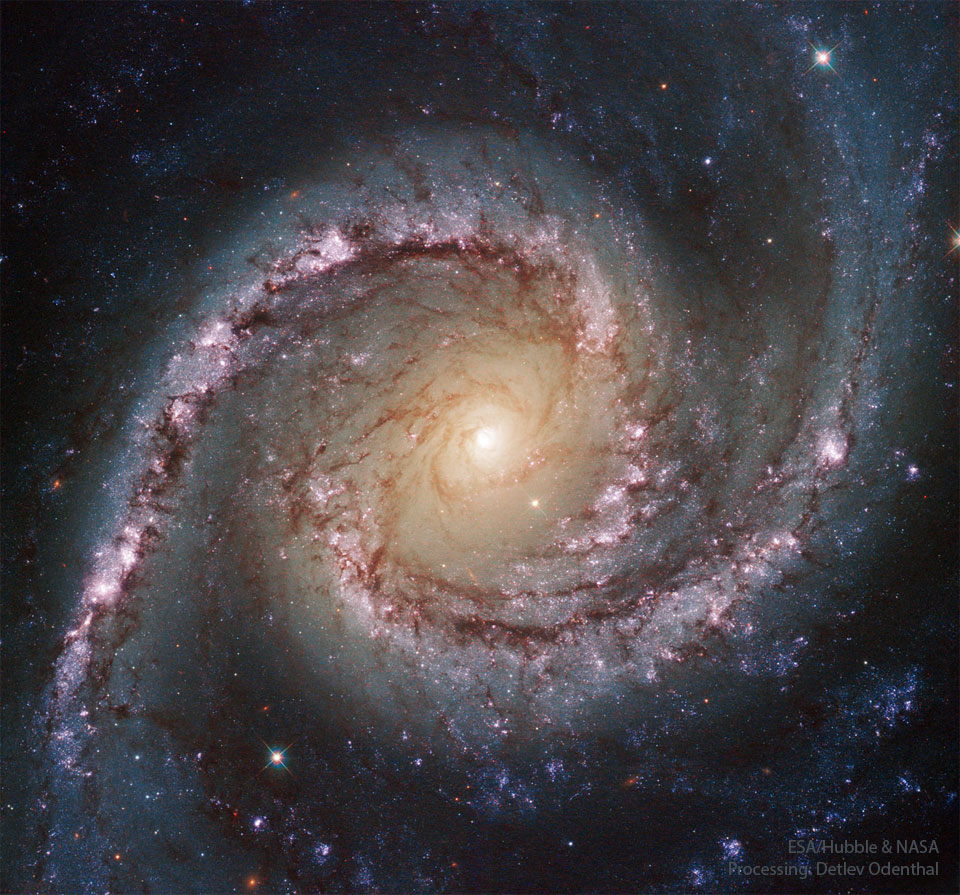
The North America Nebula can do what most North Americans cannot -- form stars. Precisely where in the nebula these stars are forming has been mostly obscured by some of the nebula's thick dust that is opaque to visible light. However, a new view of the North America Nebula in infrared light by the orbiting Spitzer Space Telescope has peered through much of the dust and uncovered thousands of newly formed stars. Rolling your cursor over the above scientifically-colored infrared image will bring up a corresponding optical image of the same region for comparison. The new infrared image neatly captures young stars in many stages of formation, from being imbedded in dense knots of gas and dust, to being surrounded by disks and emitted jets, to being clear of their birth cocoons. The North America Nebula (NGC 7000) spans about 50 light years and lies about 1,500 light years away toward the constellation of the Swan (Cygnus). Still, of all the stars known in the North America Nebula, which massive stars emit the energetic light that gives the ionized red glow is still debated. Images coming in: Stardust spacecraft's close pass of Comet Tempel 1 last night

Where else might life exist? One of humanity's great outstanding questions, locating planets where extrasolar life might survive took a step forward recently with the discovery of a significant amount of water vapor in the atmosphere of distant exoplanet K2-18b. The planet and it parent star, K2-18, lie about 124 light years away toward the constellation of the Lion (Leo). The exoplanet is significantly larger and more massive than our Earth, but orbits in the habitable zone of its home star. K2-18, although more red than our Sun, shines in K2-18b's sky with a brightness similar to the Sun in Earth's sky. The discovery was made in data from three space telescopes: Hubble, Spitzer, and Kepler, by noting the absorption of water-vapor colors when the planet moved in front of the star. The featured illustration imagines exoplanet K2-18b on the right, its parent red dwarf star K2-18 on the left, and an unconfirmed sister planet between them.
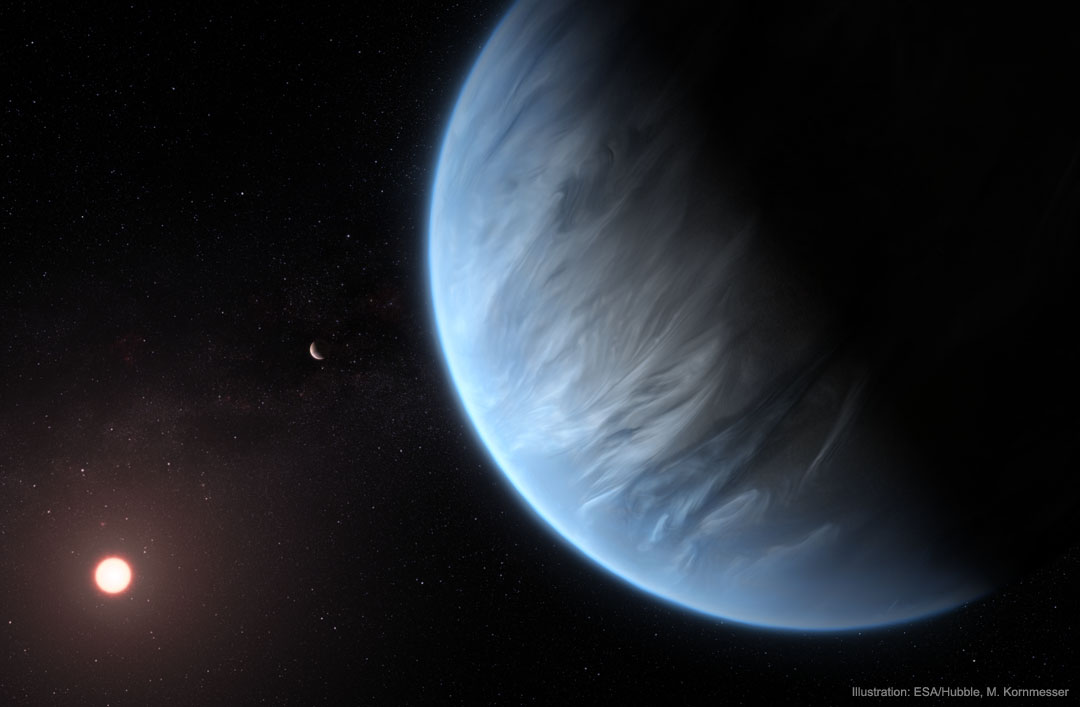
Skylab was an orbiting laboratory launched by a Saturn V rocket in May 1973. Skylab was visited three times by NASA astronauts who sometimes stayed as long as two and a half months. Many scientific tests were performed on Skylab, including astronomical observations in ultraviolet and X-ray light. Some of these observations yielded valuable information about Comet Kohoutek, our Sun and about the mysterious X-ray background - radiation that comes from all over the sky. Skylab fell back to earth on 11 July 1979.

The image above is part of the Hubble Deep Field and represents humanity's most distant yet optical view of the Universe. Galaxies like colorful pieces of candy fill the field, some as faint as 30th magnitude (about four billion times fainter than stars visible to the unaided eye). The dimmest objects are the most distant galaxies and reveal what the Universe looked like in the extremely distant past, perhaps less than one billion years after the Big Bang. To make the Deep Field image, astronomers selected an uncluttered area of the sky in the constellation Ursa Major (the Big Dipper) and pointed the Hubble Space Telescope at a single spot for 10 days accumulating and combining many separate exposures. With each additional exposure, fainter objects were revealed. The final result can be used to explore the mysteries of galaxy evolution and the infant Universe.
